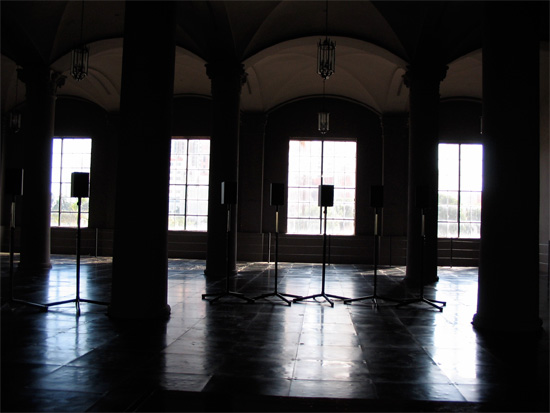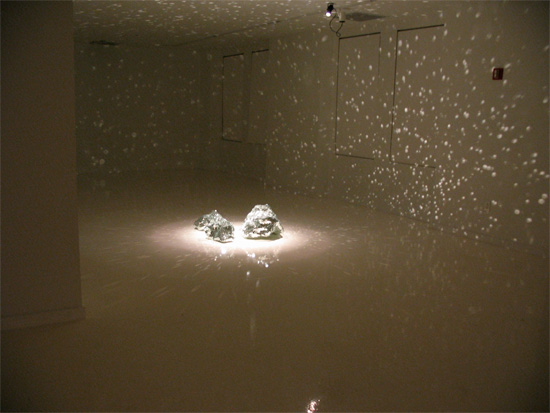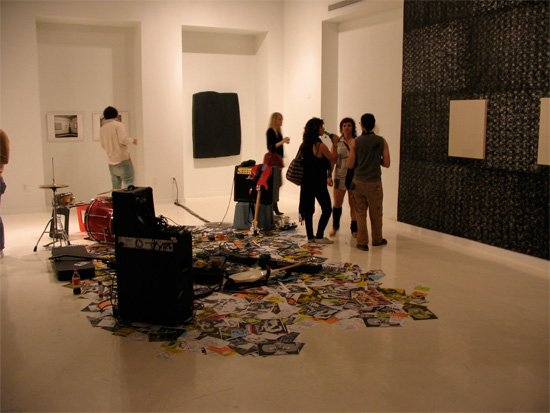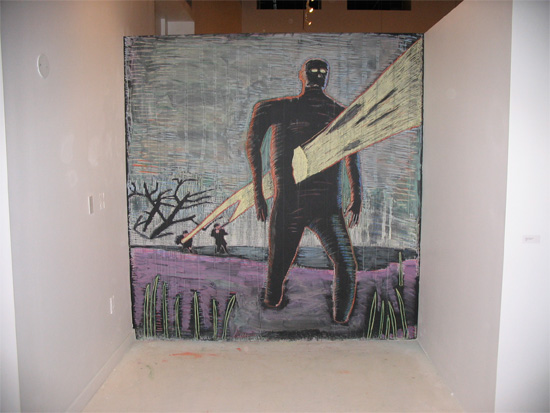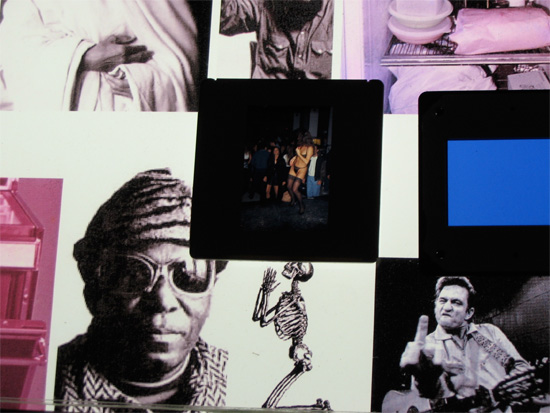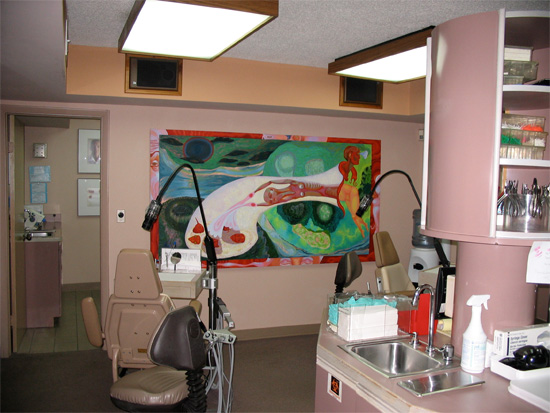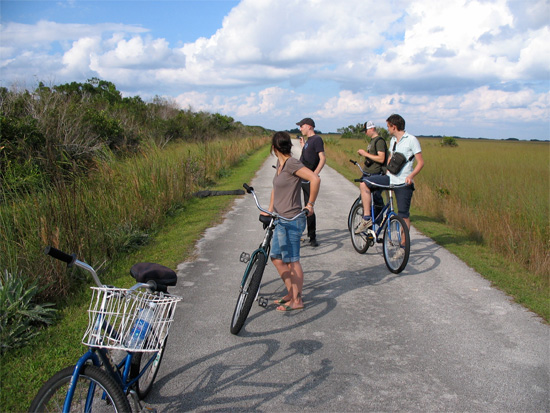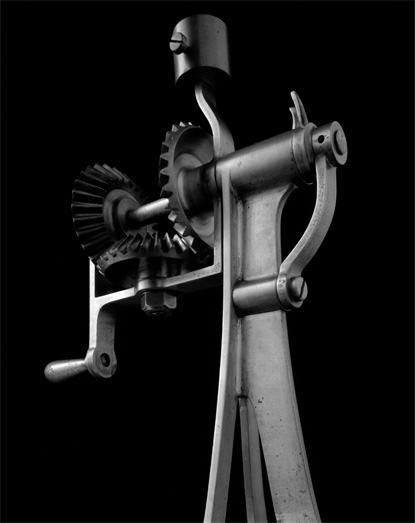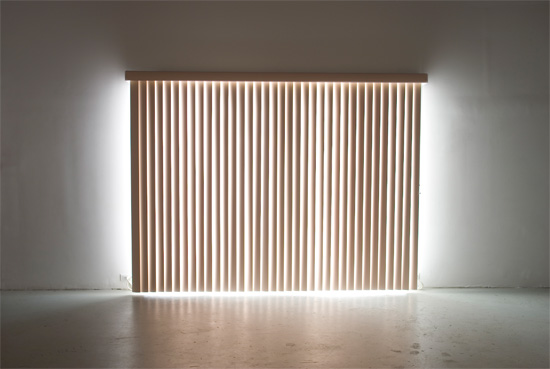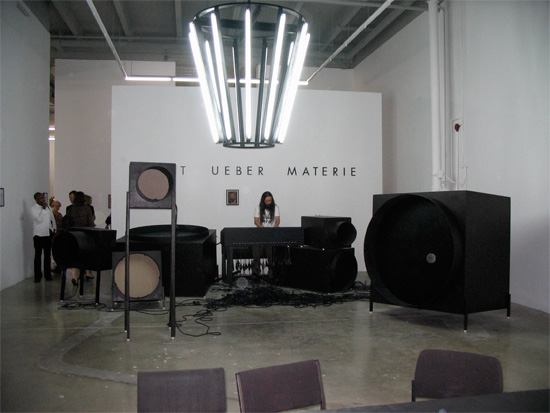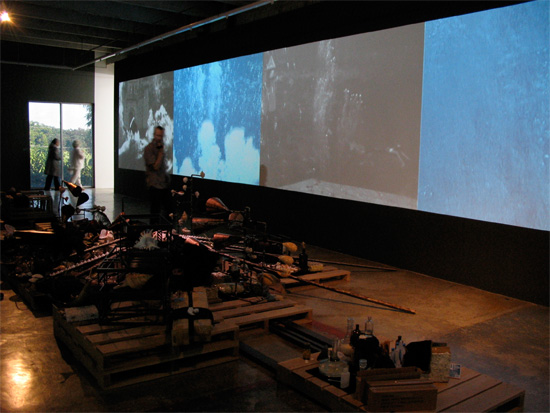
The Unseen HandPerhaps it would serve you better, dear reader, if we stopped drifting deliriously from ABMB moment to ABMB moment—so like the actual disorienting experience—and just made a bee line for a top-ten list, or something like it. And so:
Cardiff and Miller also created the sound installation in the Freedom Tower, a choral piece called Forty-Part Motet, from 2001, which consisted physically of nothing more than a ring of speakers in an empty gothic-vaulted foyer of the building’s mezzanine, plus a couple of benches. The forty voices visited upon us a sixteenth-century idea with twenty-first century technical prowess and imagination; and we understood, without saying it even to ourselves, how genius traverses the ages.
What was upstairs, meanwhile, wasn’t exactly brilliant, but it was revelatory in its own way. If we understand it correctly, Gean Moreno had curated two exhibitions based on a fat new hardcover book titled Miami Contemporary Artists, compiled by Paul Clemence and Julie Davidow, with a forward by Elisa Turner. The Freedom Tower was the site of an ample selection of the one hundred artists in the book, including a spacious, glittery installation by Wendy Wischer. The gallery at Artcenter South Florida in South Beach had some additional works. We attended the opening at the Freedom Tower and it was fun in and of itself, but it also contained a startling element of what we used to call “time warpage.” Stepping off the elevator to the exhibition we were greeted with un montón muy fancy of books on display and a photographer offering to take our portrait—which, by the way, has fairly well faded away, telling us, we think, that irony is not as dead as they say. The show was very nice: a scene of a kind of post-concert disarray by Carlos Ascurra and Juan González. A great, wall-sized, alien weirdness chalk drawing by Monteavaro which, to our horror, she insisted we erase with our bare hands. No thanks, Beatriz! A typical, lovely little evocation, in pencil, of the surveillance state by Glexis Novoa. Kevin Arrow told us that artists have become so obsessed about studio visits by out-of-town swells that he just brought his whole studio to the gallery.
Looking over the room and squinting our eyes, we could easily remember those not-long-ago Sunday afternoons in Ivan Depena’s low-rent walkup near the bay, sitting cheek to jowl with the excitable Gavin Perry on a sagging couch as he swilled down some foamy and shouted out frequently and with feeling at the then-downtrodden Philadelphia Eagles to at least hold onto a goddamned pass. Does it sound like a cliché? Well, there in the Freedom Tower, before our eyes, were elaborate gambling tables, a serious-looking radio station, hints of timing and display—strategies which Moreno, at any rate, has surely absorbed in his steady ascent as artworld arranger and doer—and more than anything we noticed an unaccustomed perkiness, perhaps a hint of swagger, in the bearings of our friends, artists long denied, whose names finally appear in boldfaced type, in a coffeetable- ready volume whose covers are hard and bright, and this scene told us more than any other that Art Basel Miami Beach had finally come to the neighborhood. Take a deep breath. We also saw a nice little Edouard Duval-Carrié painting and sculpture show at the Bake House; all manner of Basel substrata, such as Scope and Pulse; a terrific new sculpture by Ralph Provisero at Brook Dorsch Gallery; the mob scene at the Moore Space opening, perhaps better left unexplored; several glances collectionward; a swift visit to Edge Zones; the familiar faces of our boricua friends in Art Wonderland; and let us not forget the innerest of the inner sancta, the fair itself. Of course we won’t bedevil you with all of this; just as much as we have steam for. Hot Dogs on a Sizzling Griddle
Impelled by a spectacle’s jittery logic, we zipped and zoomed about the city, trying mightily to relax. You know how hard it is when you really try. We were armed with press passes—our keys to the kingdom—so we could go just about anywhere, and if we weren’t treated like royalty, at least no one gave us the bum’s rush. We managed to hit one museum, three of the biggest collections, a small clutch of off-site mini-fairs, a couple of galleries, and the valiant exhibition project of our orthodontist friend Arturo Mosquera, in whose offices hangs real art. We popped into Photo Miami to check on Michele Fiedler and her Galería 356 booth, then hoofed on down the aisle to see what W&N, Jason Mena, Omar Obdulio, Hector Madera, and company were up to. Later, we stumbled on Pablo Rodriguez’s quite snazzy Galería Candela setup at Scope, where a giant new Rafael Vargas Suárez painting made us happy we’d come all the way. We had to breeze through Edge Zones, alas, but you can get an excellent picture of Charo Oquet’s exertions—not to mention Abdiel Segarra’s Art Tracking crew—thanks to everyone’s favorite video busybody, Teo Freytes. For that matter, Freytes’ MSA Xperimental Art video of Photo Miami is swell. Teo, you’re a hero.
Just when all the hugger-mugger had worn us nearly to a frazzle, a bunch of young German artists invited us to show them Shark Valley, and we happily drove off to the Everglades, bombing down Tamiami Trail to the fabulous Teutonic sounds of Tocotronic. We’re still not sure if anyone understood our little discourse on why Shark Valley is not a valley and has no sharks, but so what? The group was clearly amazed by every alligator beside the road, every anhinga and heron lurking in the bushes, every single boneheaded garfish. It was a slow, slow, breezy day bicycling through the near Florida outback, a small miracle. Afterwards we landed at Yambó where the waitress was mightily amused, and so were we. Was it the true spirit of international understanding, or the grim joke of the unbridgeable gulf? Whatever, Oscar claimed to like his platter of lengua en salsa, and the carne asada was a big hit all around. They’re probably still scratching their heads in Leipzig, and likewise on Flagler.
The terrific: in addition to MAM’s transcendent Cardiff-Miller show, the present intallation of the Cisneros Fontanals Art Foundation (CIFO) collection—titled Fortunate Objects—was one of our favorite stops. You would not call CIFO a bastion of the cutting edge, but it’s a good collection of solid contemporary art. One of the best reasons to come to Art Basel is to see exactly what Cisneros has to offer: a huge, pristine black-and-white close-up of machine parts by master photographer Hiroshi Sugimoto; a great, horn-like trick of light by Olafur Eliasson; one of Damian Hirst’s steely formal chillers, featuring chrome, pills, and blood. We were delighted to see that a work by Leyden Rodríguez-Casanova had recently been added to CIFO’s holdings.
We returned, as we always do, to the 17th Avenue Salvadorian redoubt Atlacatl for pupusas y yucca con chicharrón. ¡Estupendo! And more than two years after leaving Miami, we finally made it to the legendary S & S Cafe. Grits! Wise-cracking waitresses! Need we say more?
The simply big: who would not be overwhelmed by collections the scale of the Rubells’ or Marty Margulies’? It continues to be the Moment of the Young German Painters at the Rubell collection—was that really Thomas Zipp in attendance, startling the bejesus out of the Basel crowds with his sirens and other urban fright-noises?—but it was a painting by a German of an older generation, Anselm Kiefer, which made us stop to consider that it’s art’s contemplative qualities and not its use as spectacle that drew us to it in the first place.
The Rubells have long championed Hernan Bas and are likely partly responsible for whatever international reputation he’s attained. His vast video and found-object mermaid- seabottom fantasia on the Rubell’s second floor was a nice surprise to us since the last thing by Bas we saw, a couple of years ago, was a series of paintings. We like Hernan’s work, and we’re happy to see that success hasn’t curdled his verve. More to come along these very lines. Follow us here. |

